Lancia 037 & Delta S4: Group B monsters that took rallying to another level
This year marks the 40th anniversary of the birth of Group B. Anthony Peacock speaks to those involved with the Lancia team – drivers and tacticians who made the 037 and Delta S4 world-beaters in WRC’s craziest era
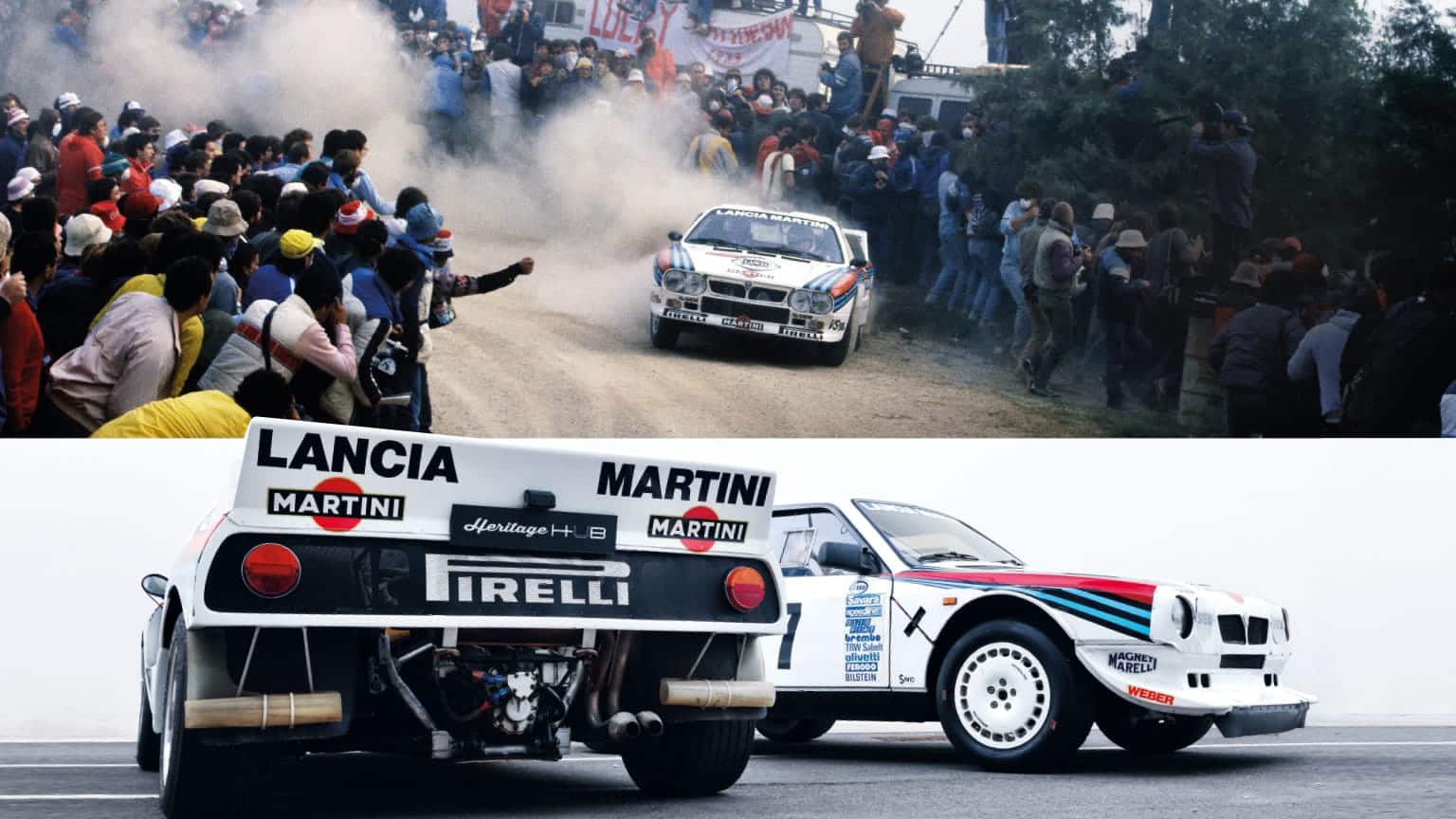
Gabriele Moleti
There’s a brutalist magnificence to the concrete sweep of the Mirafiori factory in Turin: a facility that was first inaugurated in 1939 under the gaze of Benito Mussolini – after Fiat outgrew its iconic Lingotto building – and progressively added to over the years.
In time it became a district all of its own; a city within a city where the streets are paved with cars in various stages of life and production. Not just Fiats, but Alfa Romeos and Lancias (remember those?) as well as Jeeps now, following the FCA organisation’s latest round of acquisitions.
It’s a behemoth of a factory, reportedly the largest in Europe, and yet it’s not completely used these days, which gives it a melancholy air of fading grandeur.
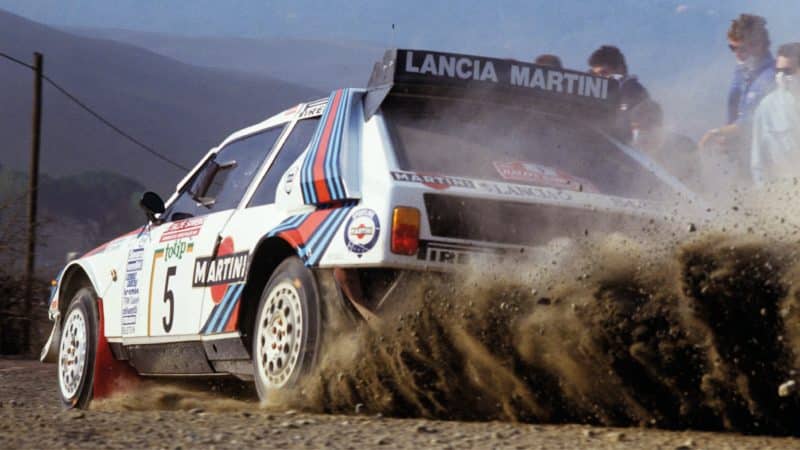
In classic Martini livery, the Group B Lancia Delta S4 of Miki Biasion powers through the gravel on the 1986 Sanremo Rally
McKlein
The automotive ghosts of the past can be found around every corner: from sign-writing that is obviously a product of the 1950s, to abandoned corridors leading to long-dead departments, where footsteps of immaculately attired draughtsmen once echoed to the beat of the dolce vita.
It is here that the FCA Heritage Hub was recently created to safeguard the company’s creations, containing a brand new example of pretty much every model that Fiat, Lancia and Alfa Romeo ever produced. And it is here that we find a breathtaking selection of rally cars including the Lancia 037 – which started the Group B story – and the Delta S4, the Group B monster par excellence. No other cars epitomised the whole triumph and tragedy of Group B quite so eloquently: the ephemeral highs and visceral lows that went hand-in-hand with such unfettered pursuit of power and perfection.
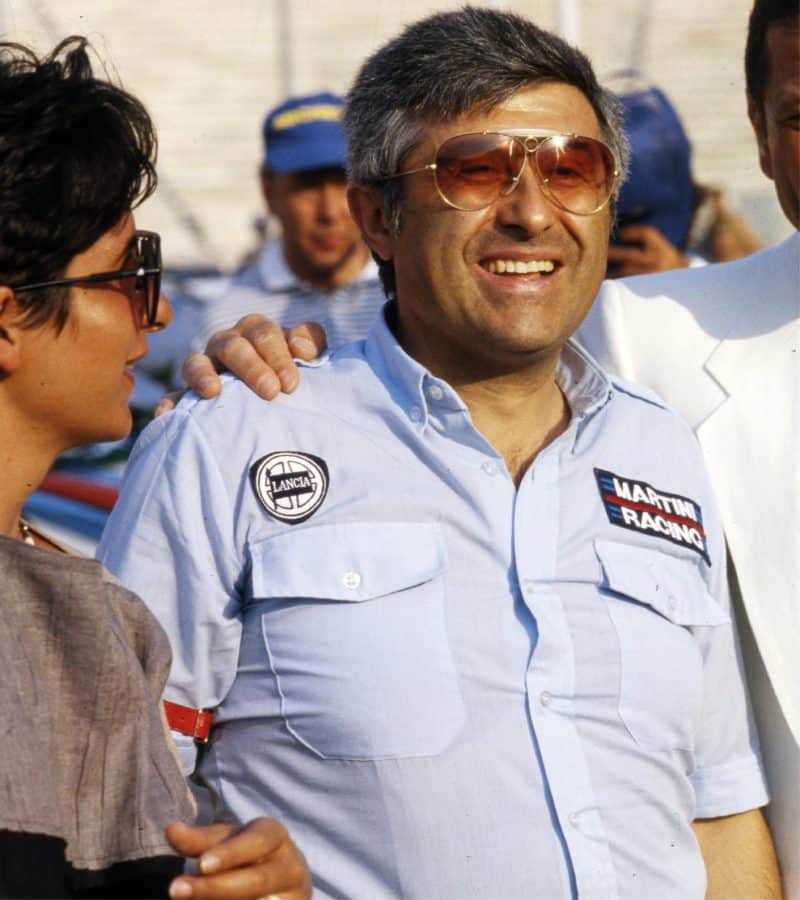
Lancia team manager Ninni Russo
McKlein
Overseeing this era of excess was Ninni Russo, Lancia’s legendary team manager who started off his career – like so many of the biggest achievers in motor sport – as a co-driver, before being asked by team boss Cesare Fiorio to take care of the day-to-day running of the all-conquering Lancia squad. Clad in impossibly elegant Martini-striped team clothing, Russo was there on every round to witness at first hand the defining epoch of world rallying.
“When I look back at that time, what I remember mostly is that it was exaggerated; beyond the limit,” says Russo. “Not so much with the 037; that was a Group B car too obviously but it was a bit more human. The Delta S4 is where it really reached the peak. In the end, we were asking cars that had the same horsepower as the Formula 1 cars of only a couple of years earlier to go down the gravel tracks of the Acropolis, or the mountain roads of Corsica. It was something I felt uneasy about, so for me, there was always a certain anxiety. Also because I knew those stages: they were exactly the same roads I had been down with the Fiat 131 when I was co-driving, with ‘only’ 250hp or so, and even then it felt fast and tough. So I knew exactly what the drivers and co-drivers were going though, especially as I was often in the management helicopter looking down on it.”
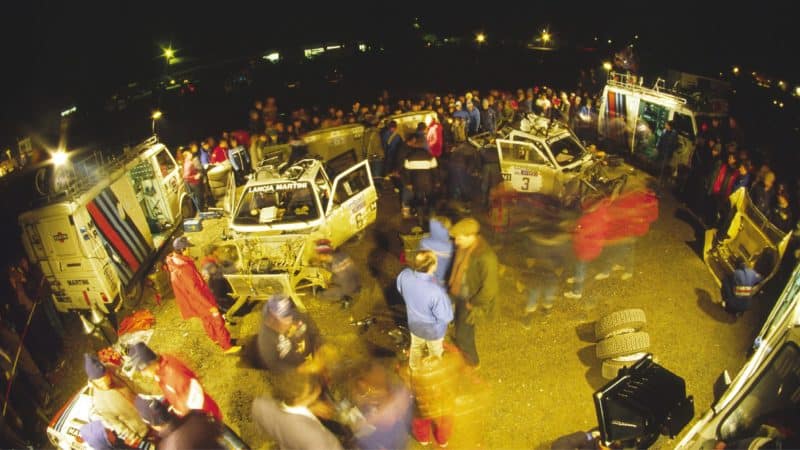
The Delta S4s of Henri Toivonen (No6) and Markku Alén (No3) are given attention in the chill of the 1985 RAC Rally. It was a strong performance from Lancia – a 1-2
McKlein
Lancia became famous for taking rallying to a whole new level in the 1980s, with its helicopters and other avant-garde innovations such as having a doctor and physiotherapist at every round. The professionalism and popularity of the team was something that had never been seen before, putting even Formula 1 in the shade.
“The professionalism of the Lancia team was something that had never been seen before”
But Russo is keen to point out that it wasn’t extravagance: just a shrewd deployment of resources. “Lancia spent what was necessary to win, and there were plenty of times when what seemed to be extravagant in fact saved money,” he says. “So a helicopter with four people in it meant that we could use the same people but get them from place to place quicker during a rally, using fewer cars and spending less, while keeping people fresher. I know this, because it was my job to do the sums.”
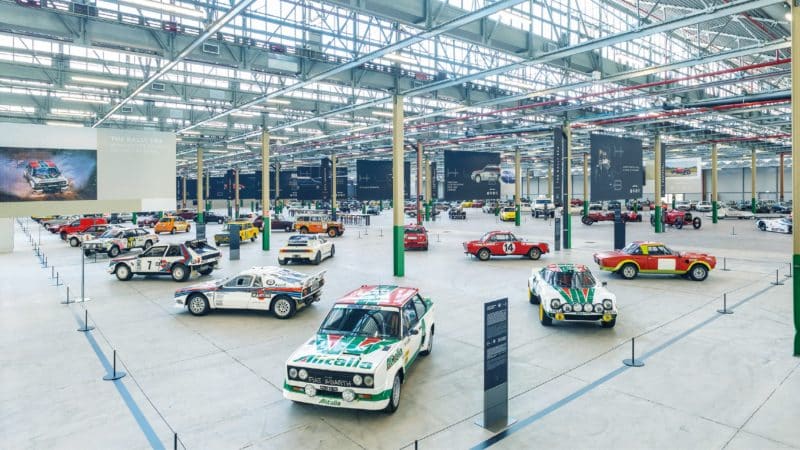
Turin’s Heritage Hub is in Fiat’s former Mirafiori factory complex – 160,000 sq ft of automotive excellence
Alessandro Venier/Lancia
Nonetheless, that helicopter got some backs up and Jean-Marie Balestre, then president of the sport’s governing body, had banned them by the time of the fateful 1986 Tour de Corse, when Henri Toivonen and Sergio Cresto lost their lives in the S4. A year earlier Attilio Bettega had perished on the same event in the 037.
After Toivonen’s accident, Balestre called a meeting in the Campo dell’Oro hotel in Ajaccio, where Russo remembers screaming at him – believing at the time that Lancia’s helicopter might have given him a chance of helping Toivonen and Cresto. The hastily convened and sombre meeting was the start of a process that led to Group B being banned by the end of the year; the right decision, according to Russo.
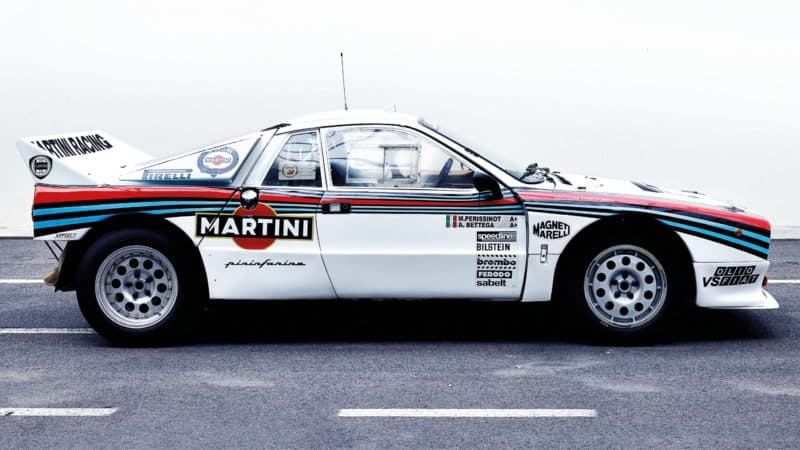
The unraced 037 that was made for Attilio Bettega
Gabriele Moleti
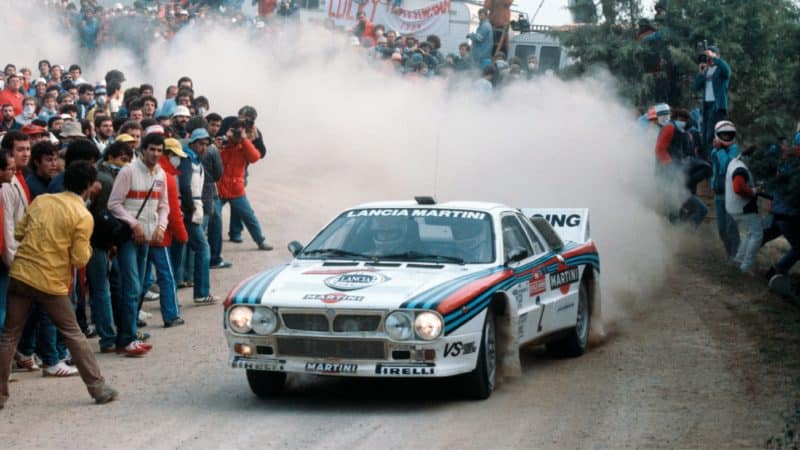
The 1983 Sanremo Rally was a 1-2-3 for the 037 – this is Walter Röhrl on his way to second
McKlein
First on the scene of Toivonen’s accident was Markku Alén, driving one of the other Delta S4s, who would become rally world champion for just 11 days at the end of that season, before the Sanremo Rally was annulled, handing the title to Peugeot and Juha Kankkunen.
“Henri and Sergio’s accident is the most horrible memory of my life,” says Alén. “I got there around two minutes after it happened and it was obvious there was nothing I could do. I felt powerless. For about a month afterwards I went home and didn’t drive. Then we had the Acropolis Rally and I was straight back into it after one test session in Italy at La Mandria. Nothing had changed really, but also everything had changed. I love Group B and I always will; the problem is that with the deaths of Attilio, Henri and Sergio, the era was tainted. Fear is a difficult thing to talk about because it was always there. But it never really affected my attitude to risk. No risk means no gain.”
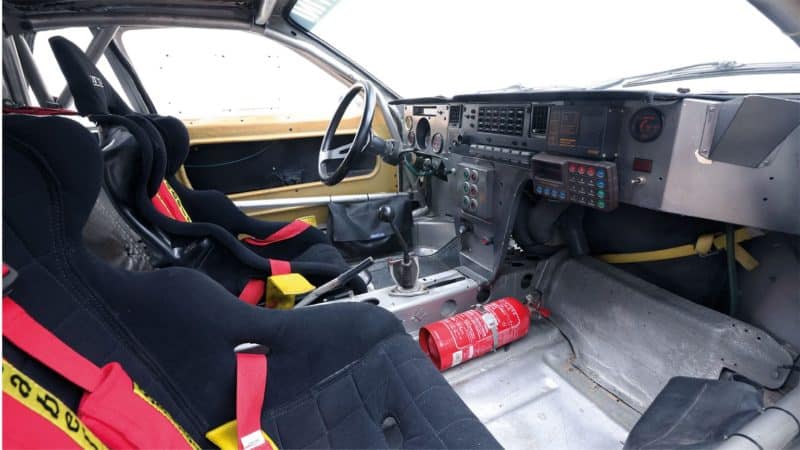
037 cockpit
Gabriele Moleti
That typically Finnish sentiment defined Group B in a nutshell. Russo describes Alén as the most Latin of his drivers, Bettega as the most reserved, Miki Biasion as the most conscientious, and Toivonen – the rock star of his era – as the one who enjoyed the closest symbiosis with the complexities of the unforgiving S4.
Of all the Group B drivers, Bettega is to some extent the forgotten man, never enjoying quite the same exposure as Toivonen or Alén on the world stage. But his son Alessandro, himself a former privateer on the World Rally Championship and now in his forties, is still around to talk for him. And so is his car.

Attilio Bettega – Group B’s forgotten man
Alamy
“Group B is about as far away from regular production cars as you can get”
The gorgeous 037 that resides in Turin, which you see on these pages, was one built for Bettega that he never got to drive. As a result, it remains unregistered and unrallied: the finest tribute that there could be to the gentle and underrated Italian..“Group B was the biggest expression of rallying but there were a lot of risks to put on the show, and some people, such as my father, paid the price,” says Alessandro. “I think it also took rallying away from its roots, in the sense that the history of the sport is based on cars that were derived from production cars – and Group B is about as far away from regular production as you can get. Still, these cars were truly spectacular. I never drove an 037 myself but I rode in one a few times: when my dad was testing, he sometimes used to strap me in and take me with him. Unfortunately I was too small to remember much about that now, but whenever I see an 037 I always associate it with him: it was my dad’s car.
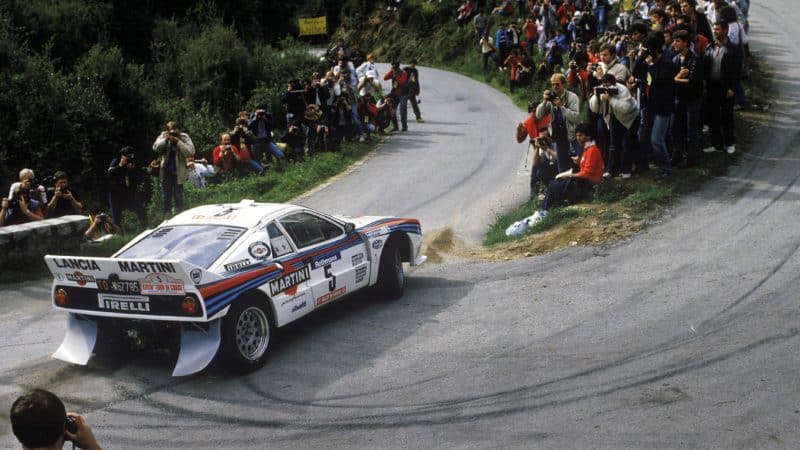
Everyone was always pleased to see you if you were driving a Lancia 037. This is Markku Alén on the twists of the 1984 Tour de Corse – which the Finn won
McKlein
“As a person, he was a complete anti-celebrity. We come from a small village in the mountains, so that wasn’t our world at all. He had a very calm character, which made him popular with the team as he was a totally genuine person. Behind that he was extremely determined, and I think unlucky; there were often problems that got in the way of good results. It’s a shame he didn’t have more time on this earth; I think the next generation of Group A cars would have suited him better. But of course he’ll always be part of the Group B story and I’m proud of that too.”
What makes the legend of Lancia in Group B so fascinating is that it was a multifaceted era where not everything was as it appeared. Far from being the dominant force in rally, Lancia was often on the back foot.
“Although the S4 and 037 were different animals, you had to drive them in pretty much the same way”
“The S4 was a fantastic car, but the big problem was that it was always six months behind everyone else,” remembers Alén. “So when Peugeot introduced their Evo 2 we still had our Evo 1. The S4 was rushed; for our first event on Rally GB in 1985 we had no handbrake and that wouldn’t arrive until I think Portugal the following year – and even then it wasn’t great. Then there were the brakes. They were never particularly powerful, and if you were left-foot braking, you would burn them out in no time. So we were always chasing, chasing and it took so long for the car to be perfect. By the end of 1986, when we won the Olympus Rally at the final round, we had finally got it right. If we’d had that car from the very beginning we could have won everything, no question.”
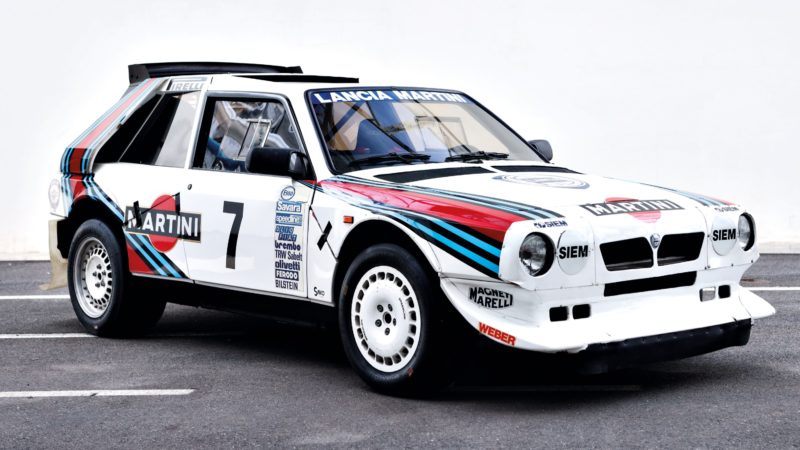
S4 Gruppo B
Gabriele Moleti
The 037 too was fundamentally flawed, in that it was rear-wheel drive at a time when four-wheel drive was the emerging trend. Despite that, the beautiful Lancia had a docility that endeared it to almost everyone who drove it. It was even pulled back into service for the 1986 Safari Rally (the round before Corsica) as Lancia believed it to be tougher than the S4. Alén finished third on the punishing tracks of Kenya: on paper, an event that wasn’t its forte.
“The 037 was mighty on asphalt,” adds Alén. “It was a proper racing car, and I was able to win Corsica twice with it; the first Finn to do that – back when the rally was 13 hours of driving. It was also a nice and easy car to drive. I never had an accident in an 037 and in fact I never even rolled one, whereas I had a couple of accidents in the S4, but never anything major. If there’s one record I’m really proud of, it’s that in all this time I never broke a bone or spilled a drop of blood. Not once. I never really crashed a lot in Group B – or any other time – but I can’t really say why. Maybe because these were cars that you had to drive with respect. Pushing to the maximum in full attack for sure, but always with respect.”
The S4 was a direct descendant of the 037: the groundbreaking turbocharged and supercharged Abarth engine was first run in the back of a modified 037 as a prototype. But the insane power meant that a four-wheel drive system was necessary, to finally give Lancia a contender capable of taking on the Audi Quattro and Peugeot 205 T16.
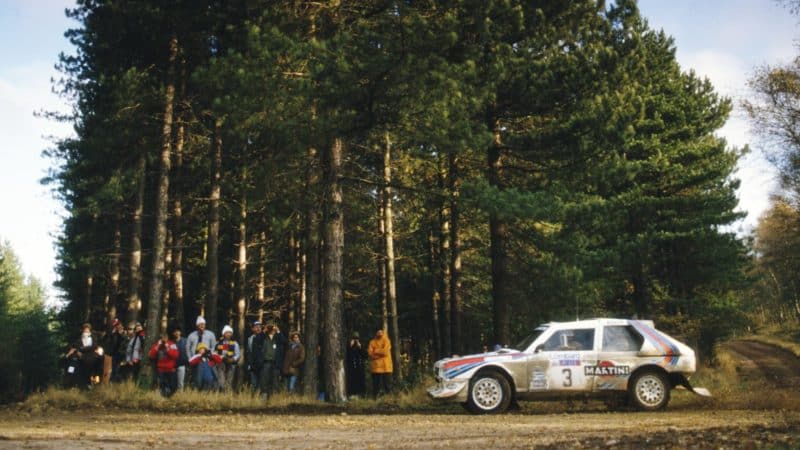
Alén in the Delta S4, 1985 RAC Rally
Getty Images
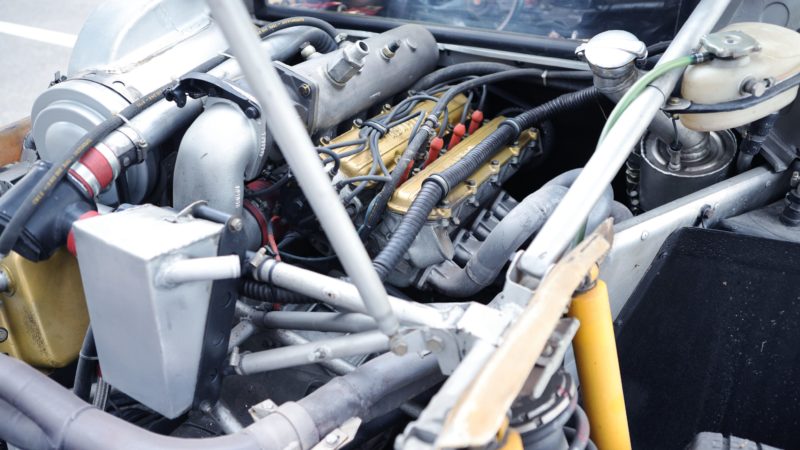
Abarth branding
Gabriele Moleti
“The S4 was much more of a gravel car than the 037,” continues Alén. “Although they were different animals, you actually had to drive them in pretty much the same way; keeping very clean and leading from the nose. Especially the 037, but also the S4. It’s not really true that you had to force it, you just had to guide it. The S4 never had fantastic torque from the start, so it was important to keep the momentum, and that was basically the driving style, which was not so easy.”

1984 Acropolis Rally with Alén’s (No2) and Bettega’s (No6) 037s near the front of the ferry
McKlein
Alén – whose record of 826 career stage wins stood for more than 20 years until the Sébastien Loeb era – drove for Fiat and Lancia for the best part of two decades. But he also tried out pretty much all the other Group B cars, above and below the radar.
“I drove the Audi Quattro at night in a secret test near Sanremo, in I think 1985,” recalls the Finn. “It was just a quick test and nobody knew about it, but I wanted to see what it was about. I remember thinking that the engine was incredible, but that the car felt very big to drive, not as agile. I actually came much closer to going to Peugeot for 1986; Jean Todt nearly persuaded me, but in the end I signed again with Lancia. I never got to drive a 205 until after 1986, when I drove it at a rally show, and it was a very impressive car for sure. All these Group B cars were completely different but they were all so good in their different ways and in the end the performance was always quite similar, like you could see at the time. But the 037 and the S4 were two of the very best. It’s hard for me to choose one.”

The last WRC victory for Toivonen, centre, was the 1986 Monte-Carlo Rally – he was dead five months later
Alamy
According to Alén, Group B perhaps could have survived beyond 1986, with different regulations to make it safer. Today’s current World Rally Cars take partial inspiration from Group B after all, allowing spaceframe chassis and bespoke models under the latest regulations. As Russo points out: “In the end, I think Group B wasn’t aligned with its time. It was too soon to have all that power.”
When Group A hastily swept in to take its place for 1987, it was certainly a culture shock. “I could drive that car with one hand and the other arm hanging from the window – it had literally half the horsepower,” remembers Alén. But for Russo, there was also a palpable sense of relief that the days of Group B thunder were over. And he wasn’t the only one.
“In the end, I think Group B wasn’t aligned with its time. It was too soon to have all that power”
“People talk about Group B as being a time of triumph and tragedy, but objectively for us there was more tragedy than triumph,” says Lancia’s team manager. “The last title we won before 1987 was the manufacturers’ title in 1983 – then we lost Attilio, Henri and Sergio. So when I look back at that period I inevitably think about the loss of three friends, but with all the time that’s passed you begin to digest it.
“I guess the warning signs were always there, after the accident in Portugal too when Joaquim Santos’s car went off into the crowd. At the time you tried not to question it too much and you just got on with your job to the best of your abilities. My problem was that I’m a sensitive person – perhaps too sensitive – so it was sometimes harder for me to deal with the dark side than for other people. In the end though, you can’t take responsibility for everything that happens. It was a beautiful adventure. An incredible chapter in the history of this sport, which we’ll never see again.”
Every era has its context, its moment of ascendancy that waxes and wanes according to the tides of technology and popular sentiment. Since the unrepeatable era of Group B, the world of motor sport has changed immeasurably. But for three mind-blowing years, Turin and Lancia were at the very heart of it.
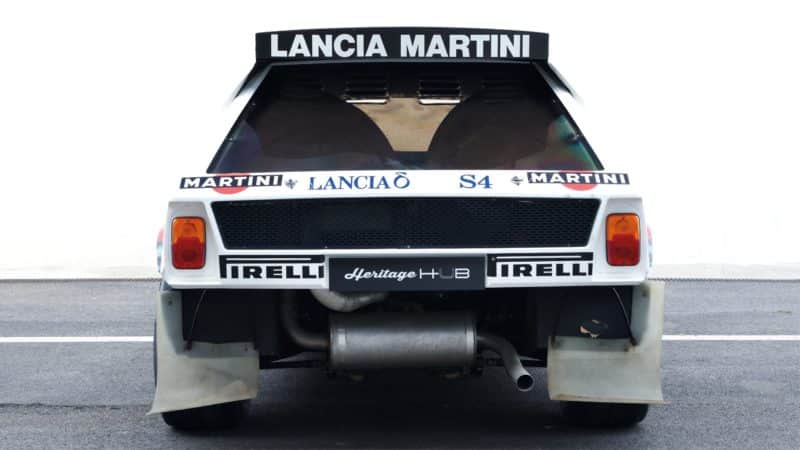
The eagle-eyed might note that the rear of this Delta S4 is not 100% period accurate; it uses parts from the S4 road car
Gabriele Moleti
